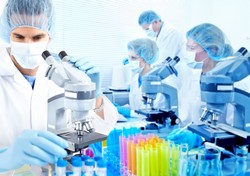Molecular insight into chaperone function
Protein function critically depends on its three-dimensional structure. In turn, this is driven by the combination of protein linear sequence and the constant stretching forces imposed by molecular chaperones that aid the mechanical folding or unfolding of an individual protein. Scientists on the EU-funded FORCECHAPERONES (Chaperones mediated mechanical protein folding) project investigated the molecular mechanisms by which proteins equilibrate in a certain tertiary structure through the help of chaperones. They employed single molecule force-clamp spectroscopy to monitor the complete refolding trajectory of an individual protein under force. Using different protein substrates, they elucidated the conformational dynamics of a single refolding protein and how different chaperones affected this process. The technique allowed researchers to discriminate between unfolded and collapsed protein states and to identify which chaperones bound to which state. Interestingly, the DnaJ chaperone exhibited different behaviour on two different substrates, thereby highlighting the importance of a consensus sequence in its binding to different proteins. Furthermore, scientists investigated the mechanical unfolding of chaperones themselves. Through the design of different mutants, they concluded that DnaJ followed a sequential mechanical unfolding pathway that did not resemble a typical hierarchical unfolding process. Additionally, the binding of hydrophobic peptides to the chaperone drastically increased its mechanical stability. Considering that Alzheimer's or Parkinson's diseases are associated with protein aggregation, understanding how to prevent or restore misfolded proteins into their native structure has important clinical ramifications. The insight into the molecular mechanism of chaperone function opens the possibility of using them as therapeutic targets.
Keywords
Chaperone, protein, aggregation, folding, single molecule force-clamp spectroscopy, DnaJ

